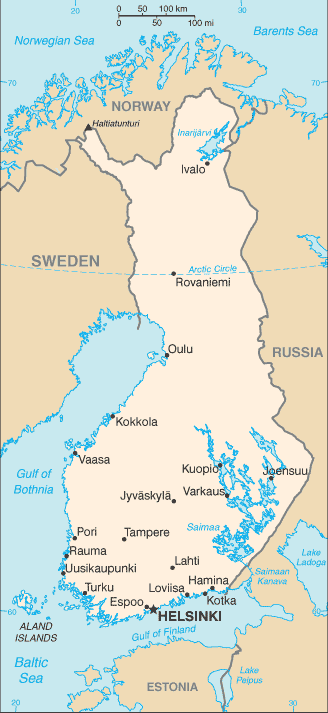Map:

Overview:
Finland was a province and then a grand duchy under Sweden from the 12th to the 19th centuries and an autonomous grand duchy of Russia after 1809. It won its complete independence in 1917. During World War II, it was able to successfully defend its freedom and resist invasions by the Soviet Union - albeit with some loss of territory. In the subsequent half century, the Finns made a remarkable transformation from a farm/forest economy to a diversified modern industrial economy; per capita income is now on par with Western Europe. As a member of the European Union, Finland was the only Nordic state to join the euro system at its initiation in January 1999.
The People:
Population: 5,223,442 (July 2005 est.)
Age structure:
0-14 years: 17.3% (male 460,977/female 443,859)
15-64 years: 66.8% (male 1,764,874/female 1,723,385)
65 years and over: 15.9% (male 328,952/female 501,395) (2005 est.)
Religions:
Lutheran National Church 84.2%, Greek Orthodox in Finland 1.1%, other Christian 1.1%, other 0.1%, none 13.5% (2003)
Government Type:
republic
Leader(s) to pray for:
chief of state: President Tarja HALONEN (since 1 March 2000)
head of government: Prime Minister Matti VANHANEN (since 24 June 2003) and Deputy Prime Minister Antti KALLIOMAKI (since 17 April 2003)
Source: The World Factbook
View All Countries